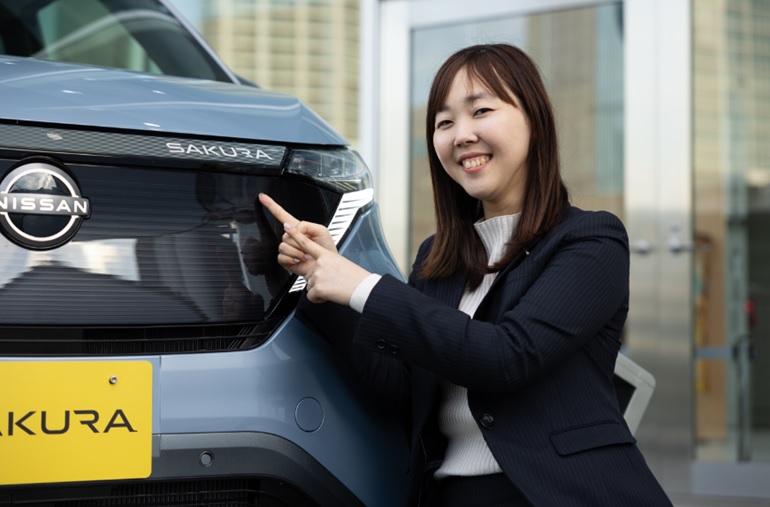Nissan Motor Corporation’s Heroes of Innovation series shines the light on some of the company’s unsung heroes who — like thousands of their colleagues worldwide — strive every day to fulfill our purpose of driving innovation to enrich people’s lives.
Passion for electrification
Meet Ryo Kawata and Yuki Nakajima, two Nissan colleagues supporting the company’s electrification efforts. Like Kyle Martus in part 1, Kawata and Nakajima are heroes of innovation at Nissan even though they have very different roles.

Leading EV infrastructure development, Kawata partners with institutions across Japan — from multi-unit housing to public buildings — to build EV charging networks. Nakajima is responsible for marketing the new Sakura minivehicle, one of the EVs that will use them.
Their work intersects at Japan’s car dealerships, where Kawata and Nakajima join sales teams to talk about pathways and barriers to introducing EVs for potential buyers. Pointing to the Sakura, Nakajima discusses how EVs can become viable for more drivers in Japan. He notes they offer a fun driving experience with the benefits of emissions-free motoring on narrow city streets and ample range for trips to the countryside.


Yuki Nakajima
Longer road trips require charging infrastructure, which is where Kawata comes in. He addresses the need to expand infrastructure across the country and shares information about the partnerships Nissan is building to accomplish that. If Nakajima gets her way, zero-emission minivehicles will be ubiquitous in a few short years. And if Kawata gets his, EV drivers will be able to travel virtually anywhere in Japan and always find a charging station.


Ryo Kawata
“Products like the Sakura open a whole new subset of customers to zero-emissions transportation,” Nakajima explains. “By making EV ownership even more affordable and accessible, Nissan is helping the move toward a fully electric future in meaningful ways — something we’ve been doing for more than a decade.”
Kawata agrees.
“Affordable EVs are one piece of the puzzle, but the infrastructure to charge them is another,” he says. “To really propel us toward zero-emissions mobility, drivers need to have a large, reliable charging infrastructure that will support the imminent growth of EVs. That means we must stay ahead of the demand curve – which is why the foundation we are building is critical. But if we succeed, our children and grandchildren will thank us.”












